




At the November CABE/CAPSS Convention the full slate of officers was elected by acclamation.

Leonard Lockhart (Windsor) was reelected CABE President for a second one-year term. After election, he stated, “Thank you Windsor and CABE for supporting my reelection to continue the work of providing highquality public education through every board of education member in Connecticut. As CABE President, I’m focused on every child in the state and the country through association with NSBA. We will continue lobbying state and federal governments and provide professional development on policy, curriculum, budget, legal, superintendent and staff relations all with civility and collaboration.”
Leonard has served as First Vice President and Vice President for Government Relations, Resolutions Chairman and CABE Area 2 Director. He has been a member of the Windsor Board of Education since 2012, where he has served as Chairman and
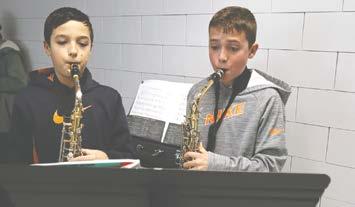
At the CABE/CAPSS Annual Convention, keynote speaker Tim Shriver spoke on treating others with dignity - no exceptions. The airwaves of recent weeks before the election were certainly well off that tract, negative campaigning leading us to be separated, telling us to not listen to the other side.
Shriver has left his day-to-day role at the Special Olympics (he continues as Chairman) to found UNITE, an initiative to bring people together, recognizing our differences but emphasizing the need to treat all with respect. We can’t all seek to agree, “but and and” we can all listen to each other.
He spoke to how individual interactions do make a difference, and we can make positive choices that in turn lead others to make positive choices, to not treat others with contempt.
With UNITE, Shriver has co-created the Dignity Index. A scale of 1 to 10, it’s how we characterize each other. From divisive language to language grounded in dignity. Holding space for listening is not condoning the actions or speech of another.
Directly from the Index that scores distinct phrases:
Level four mocks and attacks the other side’s background, their beliefs, their commitment, their competence, their performance.
Level five listens to the other side’s point of view and respectfully explains their own goals, views, and plans.
And level eight I can see myself in every human being, I refuse to hate anyone, and I offer dignity to everyone.
It’s not impractical to use more dignity, its actually the most practical thing you can do if you want to solve a problem says Shriver. All this, to get people to have a good debate, so they can get to the best understanding of what the best solution should be.
Special thanks to the CABE Leadership Fund, CAPSS, LEARN, and the Rell Center for sponsoring the keynote address.
At the CABE/CAPSS Convention, Saturday’s featured speaker provided an insightful discussion on communications in school districts. Founder and Managing Partner of Horan Communications, Chris Horan, presented on how board of education members and administrators can become better communicators.
He emphasized that school leaders should be looking to improve not only how they present information to their communities, but also how they receive information. He offered that communication occurs on a two-way street where listening is as important as talking.
Horan gave important suggestions as to how school districts can more effectively engage in communications, including having a district-wide communications plan. Importantly, he noted that such a plan should include language detailing how the district would engage in the listening aspect of communication, and not just the various ways the district would distribute messages.
He also suggested that districts should take care that when a community is surveyed on a topic, even the word choice of the format can make a difference. He noted that calling a survey a survey, as opposed to calling it a poll or a questionnaire, can make a difference in how a community engages with the document. When districts want to gain information from a sur-
The Board of Education plays a crucial role in guiding and shaping public education, particularly in your respective district and Connecticut, where its leadership can impact student outcomes, teacher support, curriculum development, and the equitable distribution of resources across diverse districts. Effective leadership within a Board of Education is essential to ensuring that public schools fulfill their mission to educate all students. In Connecticut, where socioeconomic and racial disparities are prevalent, the role of the Board of Education is even more significant. Effective Board leadership is essential in addressing educational inequities, responding to evolving educational demands, and setting policies that foster inclusive and high-quality learning environments.
Connecticut’s public schools are diverse, with a wide range of socioeconomic backgrounds, language needs, and community resources. According to state reports, disparities in access to quality education persist, especially between urban and suburban districts. Effective Board of Education leadership is vital to closing these gaps. Boards have the authority to make decisions on budget allocations, which can directly impact school funding, teacher hiring, and resource availability. By prioritizing equity, Board members can advocate for the redistribution of resources to underserved schools, ensuring that all students have access to the tools they need to succeed. This is only the first step as we must advocate for acceptance with local taxing authorities and referendums in some places.

In addition to budgetary decisions, the Board of Education is responsible for setting policies that address inclusivity. For instance, language access for English Language Learners (ELL) students and accommodations for students with disabilities are often under-resourced in public schools. Strong leadership can implement policies that prioritize ELL programs, special education services, and support for students facing socioeconomic challenges. In Connecticut, where educational disparities are stark, leadership that actively works toward reducing inequities can transform the lives of countless students.
An essential function of the Board of Education is to support the development and well-being of teachers and staff, who are fundamental to student success. In Connecticut, many teachers work in challenging environments, and the Board’s decisions directly affect their professional satisfaction and ability to provide quality education. Board leadership has the power to negotiate teacher contracts, set salary schedules, and provide funding for professional development programs. In times of financial difficulty, such as those caused by budget cuts or economic downturns, Board leaders who prioritize teacher welfare can make crucial decisions to protect educators’ salaries and benefits, maintaining a strong workforce.
Moreover, the Board can create policies that provide for ongoing training and professional growth opportunities. Teachers who are well-supported, adequately compensated, and continually trained tend to perform better, leading to improved outcomes for students. Effective Board leadership that recognizes teachers’

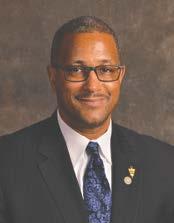
needs can address issues of teacher burnout, turnover, and shortages. In Connecticut, where many districts face challenges retaining qualified teachers, supportive Board leadership is essential for fostering an educational environment where teachers feel valued and motivated to excel.
Public education does not exist in a vacuum; it is deeply connected to the communities it serves. The Board of Education represents the voices of parents, students, and community members, making it accountable to local stakeholders. Effective leadership involves engaging with the community, understanding its concerns, and reflecting its needs in education policies. Connecticut’s diverse communities each have unique educational challenges and priorities, from addressing disparities in rural areas to managing growth in urban districts. Board members must be responsive to these differences to make informed decisions.
For example, Connecticut has seen increased demand for bilingual education, mental health services, and programs that promote college and career readiness. By listening to parents, students, and teachers, Board members can tailor policies that address these needs and create a school environment that reflects community values. Additionally, engaging the community

Mission:
and
boards
Vision:
is
EXECUTIVE COMMITTEE
Leonard Lockhart | President, Windsor
Meg Scata | First Vice President, Portland
Lon Seidman | Vice President for Government Relations, Essex
Eileen Baker | Vice President for Professional Development, Old Saybrook
Anthony Perugini | Secretary/Treasurer, Cheshire
Elizabeth Brown | Immediate Past President, Waterbury
Lydia Tedone | NSBA Director, Simsbury
Ethel Grant | Member at Large, Naugatuck
AREA DIRECTORS
Marion Manzo | Area 1 Co-Director, Region 15
Thomas van Stone | Area 1 Co-Director, Waterbury
Jennifer Hockenhull | Area 2 Co-Director, Hartford
Lisa Simone | Area 2 Co-Director, Bloomfield
Julia Dennis | Area 2 Co-Director, Berlin
Karen Colt | Area 3 Co-Director, Vernon
Sara Kelley | Area 3 Co-Director, Stafford
Chris Stewart | Area 4 Co-Director, Putnam
Ailla Wasstrom-Evans | Area 4 Co-Director, Brooklyn
Chris Gilson | Area 5 Co-Director, Newtown
Tina Malhotra | Area 5 Co-Director, Ridgefield
Lee Goldstein | Area 6 Co-Director, Westport
Jill McCammon | Area 6 Co-Director, Darien
John Hatfield | Area 7 Co-Director, Seymour
Mongillo | Area 7 Co-Director, Derby
Strumello | Area 7 Co-Director, Seymour
Dahlheimer | Area 8 Co-Director, Region 13
Klaskin | Area 8 Co-Director, Madison
Walker | Area 8 Co-Director, Westbrook
ASSOCIATES
Jaime Barr Shelburn | Associate, East Lyme
Ethel Grant | Associate, Naugatuck Becky Tyrrell | Associate, Plainville
COMMITTEE CHAIRS
Lee Goldstein | Chair, Federal Relations, Westport
Steinhauser | Chair, Resolutions, Portland Lindsay Dahlheimer | Chair, State Relations, Region 13
CITY REPRESENTATIVES
Christina Baptiste-Perez | City Representative, Bridgeport
Francoise Deristel-Leger | City Representative, Hartford Yesenia Rivera | City Representative, New Haven
Koc | City Representative, Stamford
Ireland | City Representative, Waterbury
VALEDICTORIAN
Connecticut Business Systems –
A Xerox Company
Finalsite
SALUTATORIAN
Berchem Moses PC
Pullman & Comley
Shipman & Goodwin
HONOR ROLL
JCJ Architecture
Kainen, Escalera & McHale, P.C.
Newman/DLR Group
Solect Energy
SCHOLAR
Blue Line Solutions
Brown & Brown
Chinni & Associates, LLC
Coordinated Transportation Solutions Dattco, Inc.
ESS
Franklin Covey
GWWO Architects
The Lexington Group
Perkins Eastman
The S/L/A/M Collaborative
Zangari Cohn Cuthbertson
Duhl & Grello, P.C.
Above Line Solutions
American School for the Deaf Area Cooperative Educational Services (ACES)
Booker T. Washington Academy
Cambridge International
Capitol Region Education Council (CREC)
Connecticut Alliance of YMCAs
Connecticut Arts
Administrators Association
Connecticut Association for Adult and Continuing Education (CAACE)
Connecticut Association of School Business Officials (CASBO)
Connecticut School Buildings and Grounds Association (CSBGA)
Connecticut Technical High Schools
Cooperative Educational Services (C.E.S.)
EASTCONN
EdAdvance
EDC Solutions
Explorations Charter School
Great Oaks Charter School
Integrated Day Charter School
ISAAC
LEARN
New England Science & Sailing Foundation
Odyssey Community School, Inc.
The Bridge Academy
Patrice McCarthy Executive Director & General Counsel, CABE
The recent CABE/CAPSS Convention provided two days of learning and networking. The energy and commitment was evident among all the attendees.
The convention theme “Championing Our Schools Through Unity of Purpose” can be best achieved through partnerships. In Connecticut, we are fortunate to have strong relationships with all of the educational partners – superintendents, the State Department of Education, legislators, school business officials, principals, municipal leaders, higher education, and the unions. As in any relationship, partnership does not mean we agree on every issue – but we are all committed to find ways to collaborate respectfully to prioritize the best interests of our students.
As we navigate the complex challenges in public education, from
(continued from page 1)
Vice Chairman. He chaired CABE’s Diversity, Equity and Inclusion Committee and is a graduate of the CABE Leadership Institute. Leonard also represents CABE on the Educator Evaluation and Support Council, and serves on the CREC Council. On the national level he represents the Eastern Region on the National School Boards Association Board of Directors.
Other officers elected were:
Meg Scata (Portland) as First Vice President: Meg currently serves as First Vice President. She previously served as Vice President for Government Relations and Resolutions Chair. She has been a member of the Portland Board of Education since 2017, where she has served as Board Secretary/Vice Chair, Policy Committee Chairman, and CREC Liaison. She is currently CREC Council Secretary/Treasurer. She also represents CABE on the Teacher of the Year Selection Committee. Ms. Scata is a graduate of the CABE Leadership Institute.
budget constraints to student attendance and disconnected youth, these partnerships are critical. The recent report of the 119K Commission “Young People First” illustrates the multitude of variables that impact our young people. While education is a key variable, the report identifies numerous gaps in the current systems, including insufficient workforce development opportunities and a fragmented, underfunded system of social services. Partnerships will be key to successfully advocacy to address the recommendations in the report.
At the local level, those partnerships are equally as important. Many of you have very strong relationships with your municipal officials, business leaders and other community groups. In other cases, those partnerships are a work in progress. I urge you to think of ways you can strengthen existing partnerships and develop new ones. Local businesses might be able to offer school to career experiences for your
Lon Seidman (Essex) as Vice President for Government Relations: Lon currently serves as Vice President for Government Relations. He previously served as Secretary/ Treasurer and CABE Area 8 Director. He is a member of the Region 4 Board of Education and the Essex Board of Education, where he has served as Chairman since 2007. He has served on the Advisory Commission on Intergovernmental Relations since 2016, and represented CABE on the Remote Learning Task Force. He also serves on the governing board of the Rell Center for Public Service at the University of Hartford.
Eileen Baker (Old Saybrook) as Vice President for Professional Development: Eileen currently serves as Vice President for Professional Development. She previously served as a CABE Associate Director and has been a member of the CABE Board of Directors for many years. She has served as an Area Director and the Chair of the Federal Relations Committee. She has been a member of the Old Saybrook Board of Education since 1989, where she has served as

students. Exploring joint programs with neighboring districts could meet specific student needs.
CABE will continue to provide opportunities to share best practices, challenges and successes in the coming year. Let’s all reaffirm our commitment to the partnerships that are essential to student success, and embrace the opportunity to leverage our collective strength for this shared priority.
We all need energy and inspiration to continue our work to support the growth and success of all students in our state through strong partnerships. I hope the upcoming holiday season provides the opportunity for you to reflect on the accomplishments of your district and bring your energy and inspiration to 2025.
Policy Committee Chairman for over 15 years. She has presented workshops at the CABE/CAPSS Convention on Student Representatives on Boards of Education. Ms. Baker is a graduate of the CABE Leadership Institute.
Anthony Perugini (Cheshire) as Secretary/Treasurer: Tony currently serves as Secretary/Treasurer. He previously served as a Member at Large on the CABE Executive Committee and was previously an Associate Director. He has served as the Chair of the Cheshire Board of Education in 2019-2022, and has been on the Board since 2009, serving on many committees. He has presented at several CABE statewide workshops. He also represents CABE on the Civics Engagement and Media Literacy Task Force.
Liz Brown (Waterbury) will serve as Immediate Past President. We thank Liz for her leadership and insights as CABE President.
NSBA Director Lydia Tedone (Simsbury) also serves on the Executive Committee.
Thomas B. Mooney, Esq. Shipman & Goodwin
The Nutmeg Board of Education makes many mistakes. The latest imbroglio created by the board will be reported here each issue, followed by an explanation of what the board should have done. Though not intended as legal advice, these situations may help board members avoid common problems.
Last May, the members of the Nutmeg Board of Education voted to extend Mr. Superintendent’s contract for one year, with the result that his contract now extends from July 1, 2024, through June 30, 2027. However, over the last six months, some members of the Board have decided that the performance of long-suffering Mr. Superintendent has been OK, but just OK. Accordingly, as they have discussed privately among themselves, these Board members are now thinking that the Board should consider alternatives.
Veteran Board member Bob Bombast is one of the Board members wondering if the Board could do better, and he decided at the Board’s regular meeting this month to take action. When the Board reached New Business on the agenda, Bob asked to be recognized. “Mrs. Chairperson, I move that we add an item to our agenda: Creation of a Personnel Search Committee.”
Ms. Chairperson was surprised by Bob’s motion, and she asked him why the Board would create a search committee. In response, Bob explained that the Board may benefit from conducting a superintendent search.
“Wait, what?” interjected Mr. Superintendent. “What are you talking about?”
“No offense intended, Mr. Superintendent,” Bob responded. “You are doing a fine job. It is just a matter of prudence. Unless we conduct a search, the Board doesn’t know who else is out there. You are a solid B, but there may be an A player out there who would like to be our Superintendent.”
“Well,” said Mr. Superintendent, “the Board might want to save itself some time and drop this stupid idea. I’m not going anywhere.”
Board member Mal Content spoke up. “Just relax, Mr. Superintendent. We know that you have a contract. But no one can predict the future. We have been talking it over, and we have the votes to conduct the search. De-
pending on what we find through the search process, we may want to make you an offer you can’t refuse.”
Ms. Chairperson didn’t like the way this public discussion was going, and she moved that the Board convene in executive session to discuss this matter further. Mal seconded the motion, and the Board promptly voted to convene in executive session. As the Board members got up to go to the conference room, Ms. Chairperson intercepted Mr. Superintendent. “We’ve got this,” she told him. “We will let you know if we need you.”
With that, the Board members met in executive session without Mr. Superintendent to discuss Bob’s motion. The other Board members chastised Bob for springing this surprise on them and on Mr. Superintendent. However, given that the cat was now out of the bag, the Board members decided to stay the course and create the search committee as Bob proposed.
Ms. Chairperson then reconvened the meeting in open session. “It has been moved and seconded that the Board create a personnel search committee, and to keep it simple, we Board members will make up the committee.” The Board members then voted unanimously to create the personnel search committee in accordance with Bob’s motion and to name themselves the members of the committee.
Did the Board violate Mr. Superintendent’s rights by excluding him from the executive session?
References by Board members to prior discussions and to “having the votes” suggest that a quorum of the Board may have improperly discussed Mr. Superintendent’s performance outside of a posted meeting in violation of the FOIA. However, excluding Mr. Superintendent from the executive session did not violate his rights, as described below. The larger problem is that the executive session itself was improper.
In accordance with the FOIA, public agencies may vote at a meeting to add an item to the agenda, but only by a two-thirds vote and only at a regular meeting. If the item added to the agenda is privileged to executive session, then, and only then, can a public agency convene in executive session to discuss that agenda item. Here, the Board never took the necessary vote to add the item to the agenda, and therefore the executive session was
improper.
That said, excluding Mr. Superintendent from the executive session did not violate his rights. Board members and superintendents should be aware of a ruling last May by the Freedom of Information Commission. In Arriola v. Hampton Board of Education et al , Docket FIC#2023-0356 (May 22, 2024), the Commission ruled that a board of education violated the FOIA by permitting its superintendent to attend executive session even though she did not speak. Conn. Gen. Stat. § 1-231 provides that attendance in executive session must be limited to the members of the agency (here, board of education) and persons invited by the public agency to provide testimony or opinion, provided however, that “such persons’ attendance shall be limited to the period for which their presence is necessary to present such testimony or opinion.” Until there is a legislative fix, boards should be sure to invite their superintendents into executive session only when his or her testimony or opinion is required on the matters
under discussion in executive session (which will almost always be the case).
The Board’s action to create a personnel search committee raises a number of separate legal issues. The creation of a personnel search committee was improper here, of course, because the position in question was not vacant. However, boards of education may benefit from a review of such committees and their functioning.
Section 1-200(7) provides that public agencies can create a “personnel search committee,” “whose sole purpose is to recommend to the appointing agency a candidate or candidates for an executive-level employment position.”
The creation of such a committee permits public agencies to conduct a search process confidentially without posting or permitting the public to attend their meetings. While boards of education typically appoint such committees to conduct a search for a superintendent, the statute refers to “an executive-level employment position,” which could be an assistant
See SEE YOU IN COURT page 8
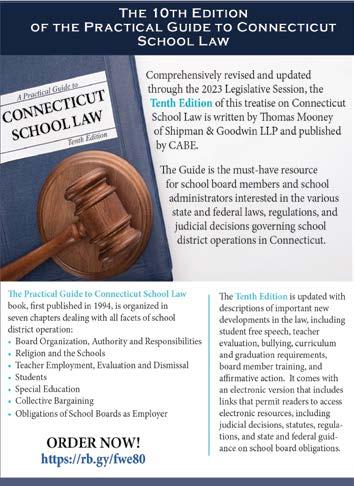
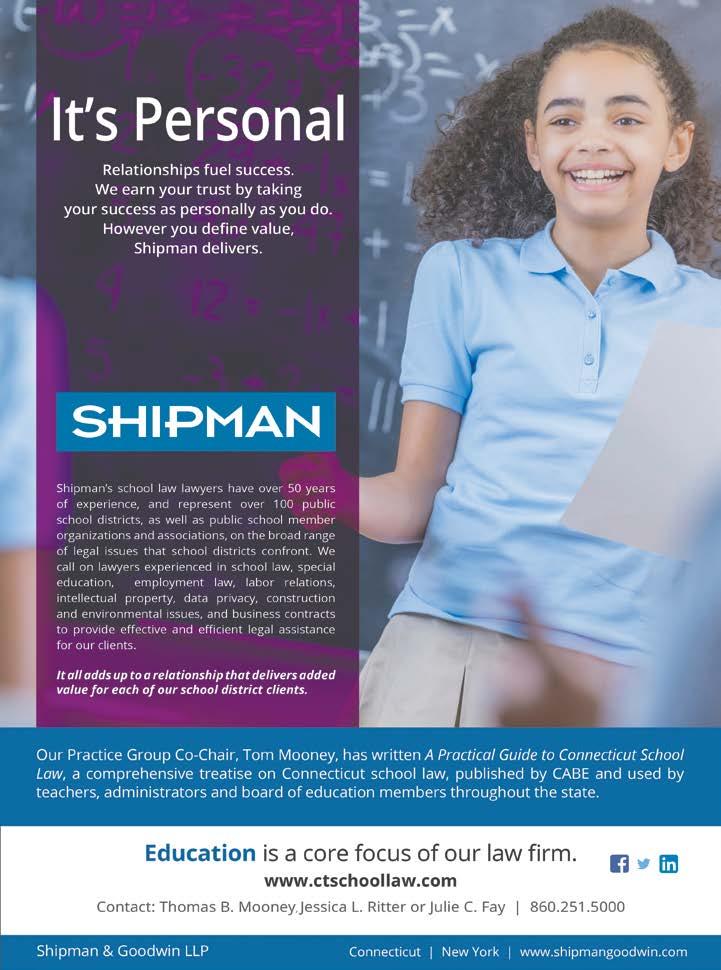
Below are the highlights of activities that the CABE staff has undertaken on your behalf over the last month. We did this:
By providing opportunities for members to learn how to better govern their districts:
z Provided a Roles and responsibilities workshop for the Region #11 Board of Education.
z Responded to 24 requests for policy information from 14 districts, providing sample materials on policy topics. Further, districts continue to access CABE’s Online Core Policy Reference Manual and/or online manuals posted by CABE for policy samples. The topics of greatest interest were those pertaining to AI, Title IX, Paraeducators.
z Provided support to board members and central office administrators regarding policy matters.
By providing services to meet member needs:
z Facilitated board chair check-in discussion.
z Discussed climate surveys with the Region #8 Board of Education.
z Participated in numerous phone calls from board members and superintendents.
z Continue to participate in a working group for the development of a Title
IX Toolkit.
z Working with the CT State Board of Education and the Digital Learning Advisory Council on developing AI B est Practices in Schools.
z Provided presentation to Aspiring Leaders on the topic of Policy Support and Board of Education Relationship Development.
z Participated on a panel for UCONN 093 students also on the topic of Policy Support and Board of Education Relationship Development.
z Presented at the CABE 2024 Fall Meeting of Superintendent’s Administrative Professionals on the topic of Cell Phone Policy Considerations.
z Prepared materials, as part of the Custom Update Policy Service, for New Hartford and Sterling
z Prepared materials, as part of the Custom Policy Service, for the Bridgeport, Danbury, Shelton and West Haven Public Schools.
z Preparing a Policy Audit for the Killingly and Orange Public Schools.
By representing Connecticut school boards on the state or national level:
z Attended SDE Performance Matters convening.
z Participated in CAS Board of Directors meeting.
z Participated in CREC Council meeting.
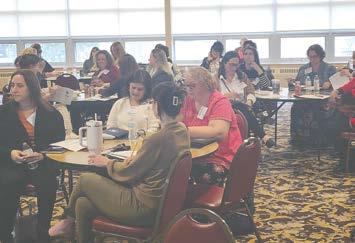
z Participated in NSBA Executive Directors Liaison Committee meeting.
z Attended Increasing Educator Diversity Symposium
z Participated in CT Educational Partners meeting.
z Attended Special Education Task Force meetings.
z Attended Early Childhood Symposium
z Attended CT State Board of Education meeting.
z Attended CT Teacher of the Year ceremony.
By helping districts operate efficiently and conserve resources:
z Posted policies online, as part of the C.O.P.S. Program for Bethel, Branford, Danbury, Derby, Granby, Griswold, Killingly, Portland, Region #4, Ridgefield, Voluntown, Westport, and the CABE Core Manual.
By helping school boards to increase student achievement:
z Participated in CABE DEI Committee meeting.
z Provided follow up webinar on the use of EdSight
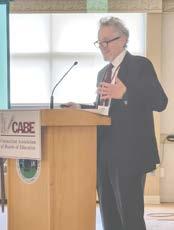
By ensuring members receive the most up-to-date communications:
z Provided one issue of Policy Highlights via e-mail, with information regarding religion in the public schools.
By attending Professional Development to strengthen staff knowledge and skills.
z Participated in Fall NSBA Council of School Attorneys virtual seminar.
z Participated in NEASC webinar on cellphones in schools.
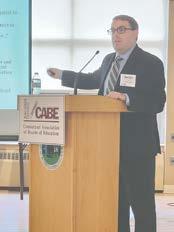
Patrice McCarthy Executive Director & General Counsel, CABE
A session at the recent Connecticut State Department of Education Performance Matters Conference featured the work of the Center for Connecticut Education Research Collaboration (CCERC).
CCERC is a research collaborative of public and private universities across Connecticut that responds to ongoing evaluation and research needs of the CSDE, provides research opportunities for Connecticut researchers, and fosters collaboration across the state’s institutions of higher education.
The mission of CCERC is to address pressing issues in the state’s public schools through high quality evaluation and research that leverages the expertise of researchers from different institutions possessing varied methodological expertise and content knowledge.
Albertus Magnus College, Connecticut State Colleges and Universities, Sacred Heart University, Trinity College, UConn, University of Hartford, Wesleyan and Yale all participate in the collaborative.
Their current projects include:
• Advanced Course Taking Patterns in Connecticut High Schools: This study examines advanced course taking among high school students, with attention to changes in supply and demand following the onset of the pandemic.
• Categorizing and Understanding Facilities and Long-term (Capital) Investments: This study aims to better understand ways districts spend allocations on long-term facilities and other physical investments.
• Teachers and Leaders Turnover and Supply: This study will examine perceptions regarding effects of the pandemic, sources of strain and support, and patterns of educator certification, shortage, and mobility.
• Connecticut High Dosage Tutoring Statewide Program Evaluation: This project will evaluate the effectiveness of high dosage tutoring programs implemented during the 2023-24 school year and beyond.
• Effect of High-Dosage Tutoring Following COVID-19: This project will evaluate the effectiveness of tutoring programs implemented with ARP-ESSER funds.
• Equity in Academic Recovery in Response to COVID-19: This project will assess the extent of potential inequities in academic recovery affecting vulnerable populations and identify factors associated with greater or lesser equity in recovery.
• Evaluation of the Learner Engagement and Behavioral Health Pilot: This study evaluates the efforts of school districts who will develop and pilot test new systems to meet the behavioral health needs of
students, families, and staff.
• Evaluation of Professional Learning Masterclass on Science of Reading: This study will evaluate the Science of Reading Masterclass professional development initiative.
• Evaluation of Reading Curriculum Implementation: This study will examine implementation of new literacy curricula aligned to the Science of Reading and Connecticut’s Literacy Strategy in grades K-3.
• Identifying Effective and Equitable Socio-Emotional Supports for Students and Educators: This study explores how district are supporting equitable socio-emotional outcomes following the deep and ongoing effects of the pandemic.
• Investigating Variations in the Design and Implementation of School District ARP-ESSER Plans: This study examines how districts invested their ARP-ESSER funds and the implications for teaching, learning, and equity.
• Social Media and Digital Literacy: This study examines the efficacy of in-school cellphone prohibitions and an eight-week digital literacy curriculum social media and technology interventions on adolescent student well-being, learning, and engagement.
• Summer Enrichment Evaluation: This study assesses students’ experiences in summer enrichment
programming and its effects on their social, emotional, and behavioral well-being.
• Virtual Reality in Connecticut Schools: This study explores the current use of virtual reality within Connecticut public high schools along with teachers’ and students’ perceptions and attitudes.
The CCERC completed a study of the Learner Evaluation and Attendance Program (LEAP), which evaluated the effectiveness of home visits for re-engaging students who were identified as chronically absent during the pandemic. Their findings include:
• Students in the LEAP program during the 2022-23 school year had a 10 percent increase in attendance six months later.
• The LEAP program led to sustained increases in attendance for students in all grades. The impact was largest for students in grades 9-12, whose attendance increased by more than 15 percent.
• The impact of LEA was similar across student characteristics of gender, race, free or reduced price lunch eligibility, English Learners and special education.
• LEAP visits conducted by teachers or other district staff were more effective than visits conducted by other individuals.
Nicholas D. Caruso, Jr. Associate Executive Director for Field Service and technology, CABE
In the 40 years since I first sat as a member of the Bloomfield Board of Education, I have participated in dozens of professional development opportunities. As a brand-new board member, I attended my first CABE/ CAPSS Convention in 1983 and was amazed at how much there was to learn about board service, education and governance. Those conventions have given me much to think about over the years. In particular, many of the keynote speakers stand out in my mind for what I took away from their message.
Two speakers, in particular, mo-
tivated me to work harder and raised the bar for my expectations of myself.
Dr. George McKenna
Dr. McKenna told an inspiring story about how, as principal of George Washington Preparatory High School in Los Angeles, he turned an inner city, highly challenged school into an award-winning facility. His message gave me hope that if we all persist, we can achieve great things.
Captain Bill Pinkney
Bill Pinkney was the first captain of the Freedom Schooner, Amistad, a replica of the ship made famous when African captives took the ship away from their Spanish captors which trig-
gered a series of events leading to the U.S. Supreme Court freeing them and letting them return home.
Captain Pinkney spoke of his travels around the world as the first African-American to circumnavigate the globe around all seven capes – a most arduous journey. He spoke of the hard work to get sponsors for the trip, the months of preparation and the journey itself. His determination to get the Amistad built in Mystic Seaport was also inspiring. In part, because of that speech, I am proud to be a current member of Discovering Amistad, the custodian of this symbol of freedom.
Likewise, I am a part of a national group of school board association trainers and we meet annually to get
together to learn from, and with, each other. State associations take turns hosting the conference and each state brings in a local expert to teach us something unique to our craft.
While there have been a whole series of very interesting (and inspiring) presentations, two have stood out for the impact they a had on me:
• Brain Development by Pat Wolfe, NSBA Federation of School Board Association Trainers and Meeting Planners Annual Conference 2007 – San Francisco, CA, and
• Values-based Decision-Making by Dr. Philip Boyle 2002 – Asheville, NC, The Iowa Lighthouse Project.
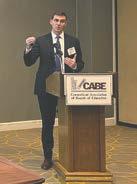
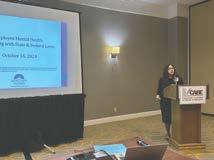
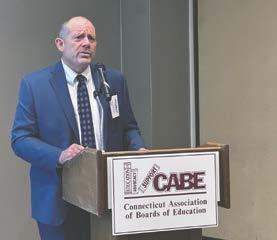
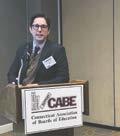
(continued from page 6)
superintendent or even high school principal position. Bradshaw Smith v. Personnel Search Committee, Windsor Board of Education, Docket #FIC 2008-047 (August 13, 2008).
As noted above, the FOIA provides that the purpose of a personnel search committee is to recommend to the appointing agency a candidate for an executive level position. It may seem counterintuitive that a board of education could appoint its members to such a committee to recommend a candidate to themselves. However, the Freedom of Information Commission has ruled that such a procedure is appropriate. See, e.g , Steinmetz and The News-Times v. Danbury Board

of Education, Docket #FIC 2003-109 (September 24, 2003). Moreover, if board members serving as a personnel search committee want input from others, they can invite such persons to their private meetings to obtain such input. Limiting membership of such a committee to members of the board is advisable because it permits the board itself to control the process that will result in the appointment to an executive-level position.
Attorney Thomas B. Mooney is a partner in the Hartford law firm of Shipman & Goodwin who works frequently with boards of education. Mooney is a regular contributor to the CABE Journal. Shipman & Goodwin is a CABE Business Affiliate.
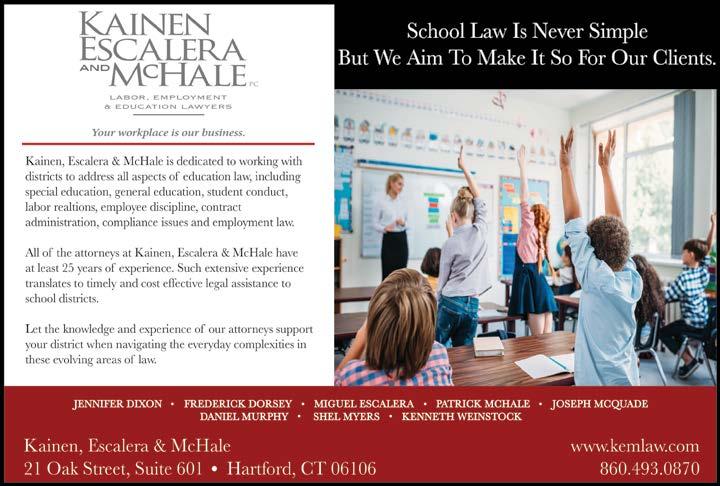
Jody Goeler Sr. Staff Associate for Policy Service, CABE
In our highly politicized society and the 24-hour/day news cycle with their never-ending breaking news banners, district leaders are more often called upon to post position statements that take stances on a variety of significant and often troubling local, national and world events.
As superintendents and board chairs remain mindful of their responsibilities to their entire communities and the broad range of views held by students, parents and residents, drafting and posting such statements requires thoughtful deliberation: Does this event rise to the level of requiring a district position? Is the subject of the matter related to the district’s mission or its jurisdiction? How detailed or long should the statement be, and so on.
Most recently, the world event resulting in a widespread array of such statements has been the Israeli-Gaza conflict prompting protests on college campuses across the country. As many of these protests expanded to the installation of encampments, many college presidents across the country gave institutional voice taking a stance on the conflict and its impact.
As these encampments grew and tensions rose, public scrutiny increased as did political interest and pushback. This culminated in U.S. House of Representative hearings with three prominent university presidents. National Public Radio reported on December 8, 2023 on All Things Considered, “After a disastrous testimony, three
college presidents face calls to resign,” referencing the college presidents from Harvard, Penn, and MIT and their “intense exchange during more than three hours of testimony” before the House Committee on Education and the Workforce.
These highly publicized and politicized events threatened the loss of donor support, compromised the students’ sense of security, and resulted in the resignations of high-profile college presidents. As universities took stock of their response to these highly charged events, Many began updating or adopting their policies on institutional neutrality. Among these colleges and universities is our own University of Connecticut.
According to a recent Hartford Courant article, “a representative of the University of Connecticut said school leaders are actively discussing adopting a policy of ‘institutional neutrality’ that would bar administrators from making official statements on topics that lack direct connection to UConn’s mission and operations.” (UConn Considering Institutional Neutrality Policy as Student Protests Over Israel-Hamas War Continue, Alison Cross, Hartford Courant, Oct. 21, 2024)
A UConn spokesperson defines the university’s position the following way: “The University firmly believes that our campuses must be home to dialogue, discussion, and debate on all manner of issue or event among members of our community.” She goes on to say, “However, the University administration putting itself in the position of participating in those debates as an institution is problematic.” (Cross, Oct. 21, 2024)
While there are significant differences between universities and public schools, such as university reliance on donor support and concerns over endowment fund distributions, implementing institutional neutrality policies may serve to provide guidance in several common areas. For instance, there’s a concern that an institution issuing a statement on a contentious issue or event could divide a community and give the appearance the school is taking sides. In addition, there’s a common concern that issuing institutional statements creates a precedent and the potential expectation that the school will do so on a regular basis. Such considerations weigh on superintendents and their boards as they consider whether to issue statements on a wide range of highly publicized events and contentious issues from racially motivated attacks and incidents of hate speech to tragic accidents and global conflict.
Reviewing neutrality statements and policies from a range of colleges and universities, there is language districts may consider bringing context to this complex and dynamic issue as well as policy language.
University of Pennsylvania’s “Upholding Academic Independence” for example suggests, “Responding to one issue inevitably highlights issues and groups that receive no message – omissions that carry their own meanings, however inadvertent.” It also reasons, “It is not the role of the institution to render opinions – doing so risks suppressing the creativity and academic freedom of our faculty and students,” adding, “Even as they seem to provide emotional support to individuals in
our communities, institutional pronouncements undermine the diversity of thought that strengthens us and that is central to our mission.”
One area that appears common to the rationale of many such policies refers to the assurance that any institutional statement will tie to the institution’s mission and purpose. The Johns Hopkins President expresses this succinctly. “We – as university leaders and deans – have arrived at a strong commitment to make institutional statements only in the limited circumstances where an issue is clearly related to a direct, concrete, and demonstrable interest or function of the university.”
As public schools in Connecticut take seriously their obligation to encourage and provide space for debate and critical thinking as well as promoting student voice and agency, superintendents and boards will need to continue examining their roles as leaders: Does a school leader have the responsibility to respond to events that impact their school community? What if the response alienates others? Do public schools bear the responsibility to take a stance against situations of injustice?
Over the next several months, CABE’s policy department will continue to research this topic and develop a model policy for boards of education and superintendents interested in providing their districts guidance on this topic. A successful policy will provide boards the opportunity to emphasize and keep central their commitment to student learning.
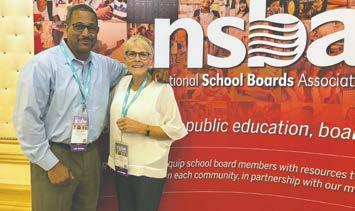
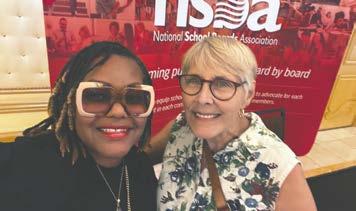

Sheila McKay Associate Executive Director for Government Relations, CABE
At the November State Board of Education meeting, the Connecticut State Department of Education (SDE) released the 2023-24 results from the Next Generation Accountability System — a system where schools and districts earn points on a broad set of 12 indicators, moving beyond test scores and graduation rates to provide a more holistic perspective of district and school performance.
Ajit Gopalakrishnan, SDE’s Chief Performance Officer, presented the indicators and honed in on the bright spots of math and science scores improving and chronic absenteeism declining for the second year in a row. Three turnaround schools and nine focus schools performed well enough to lose their designation. Gopalakrishnan also reported on student group disparities - Black/African American; Hispanic/Latino; White; High Needs, which continue to exist. The press release is https://portal.ct.gov/ sde/press-room/press-releases/2024/ accountability-results-show-improvement-across-most-indicators
(continued from page 2)
fosters trust and encourages parents and residents to take an active role in education. Community engagement by the Board of Education is critical in Connecticut, where diverse populations bring a variety of perspectives and needs. Leadership that values and integrates these perspectives strengthens the connection between public schools and the communities they serve.
One of the most influential roles of the Board of Education is to shape the curriculum and establish learning standards. This responsibility involves not only setting academic benchmarks but also ensuring that the curriculum is relevant, inclusive, and responsive to changing societal demands. In Connecticut, Board members are tasked with adopting policies that reflect the state’s diverse cultural history and future workforce needs. A well-rounded curriculum that includes arts, sciences, technology, and social studies can prepare students for a range of careers and civic responsibilities.
Board leadership is also critical in fostering skills that will be im-
Attorney Michael McKeon, SDE’s Director of Legal and Governmental Affairs, brought a 10-4b complaint to the board for consideration against the Connecticut Technical Education and Career System (CTECS). CGS 10-4b is a complaint alleging a failure or inability of the board of education to implement the educational interests of the state. It sets in motion an investigation, inquiry, hearing, and a remedial process.
The State Board of Education found that there is reasonable cause to initiate a complaint in its vote on the matter. There is in Connecticut, an “equal opportunity to receive a suitable program of educational experiences and the mandates pertaining to education within the jurisdiction of the State Board of Education be implemented.”
The document further went on… “The public schools shall be open to all children five years of age and over… and each such child shall have, and shall be so advised by the appropriate school authorities, an equal opportunity to participate in the activities, programs and courses of study offered in such public schools, at such time as the child becomes eligible to participate in such activities, programs and
portant for the 21st century, such as digital literacy, critical thinking, and adaptability. Connecticut’s economy is increasingly reliant on technology and innovation, and strong Board leadership can ensure that the curriculum keeps pace with these developments. By including STEM programs and vocational training, Board members can help students acquire the skills necessary for high-demand jobs in the state. Effective Board leadership can foster a curriculum that is not only academically rigorous but also relevant to students’ lives, preparing them to succeed in a complex and competitive world.
The Board of Education in Connecticut also plays a crucial role in navigating challenges that affect public education, such as shifts in state or federal policy, budget constraints, and public health crises. Leadership that is proactive, adaptable, and forward-thinking is necessary to address these issues effectively. For instance, the COVID-19 pandemic posed significant challenges for school systems across Connecticut, requiring swift and decisive actions from Boards to transition to remote learning, imple-
courses of study, without discrimination on account of . . . disability.”
There have been complaints about the process of admission of disabled students over many years.
Two annual reports were received by the State Board of Education at its last monthly meeting.
Connecticut Advisory Council for Teacher Professional Standards Annual Report 2023-2024
The council made recommendations regarding the teacher career continuum for the 24-25 school year:
1) Focus efforts and allocate resources to retain teachers. Teacher retention is critical as districts find teachers leaving the profession, and moving to other districts for higher salaries, better benefits, and overall better working conditions.
2) Include more educators on committees and councils that are focused on implementing changes to the profession. Educators need to be the drivers of change. Educators need to be active members of councils that are advocating for changes to the profession.
Connecticut Advisory Council for Administrator Professional Standards Annual Report 2023-2024
The council made the following
ment safety protocols, and address learning loss. Strong Board leadership can create contingency plans, allocate resources effectively, and make decisions that prioritize student and staff safety.
Additionally, Boards of Education must often make decisions in politically charged environments, balancing diverse viewpoints on topics such as standardized testing, school choice, and curriculum content. Effective leaders on the Board of Education can navigate these challenges with diplomacy and focus on the best interests of students. By fostering open communication, transparency, and a commitment to evidence-based policies, Board members can build trust and maintain the integrity of public education.
In Connecticut, the leadership of the Board of Education is central to ensuring that public education serves all students equitably, supports teachers, reflects community needs, and prepares students for a rapidly evolving world. Effective leadership on the Board of Education can address disparities, guide policy, and respond to challenges, ultimately improving
recommendations —
1) Work to fully fill all seats on the Connecticut Advisory Council for Administrator Professional Standards to have a full constituency providing advice to the State Board of Education, the Governor, and the joint standing committees of the General Assembly.
2) Review the Educator and School Leader Evaluation Document and elicit feedback as Connecticut Schools implement the new model.
3) Elicit the diverse perspectives and experiences and backgrounds of the council.
4) Elicit feedback from districts as they go through and experience the new 2024-2025 evaluation plan.
5) Focus on a mentoring culture for administrators and methods to implement meaningfully into professional practice for school leaders.
6) Confirm CACAPS goals for the upcoming years at the first meeting held on Wednesday, October 16, 2024.
You can watch the meeting at https://portal.ct.gov/sde/board/stateboard-of-education-meetings/2024board-and-committee-meetings. At the 1:03 minute mark is the indicator presentation and 2:06 minute mark is the 10-4b complaint presentation.
educational outcomes and fostering stronger communities. As public education continues to evolve, strong Board leadership remains essential in fulfilling its mission to educate, inspire, and empower Connecticut’s diverse student population. Please cheerfully conduct this work with consultation and in unison with your Superintendent.
n Connecticut State Board of Education
December 4, 2024 9:30 a.m.
450 Columbus Boulevard Plaza North Conference Room C and D
Patrice McCarthy Executive Director & General Counsel, CABE
The Connecticut Office of Early Childhood recently hosted a conference to discuss the Blue Ribbon Panel on Child Care Five Year Plan which provides a vision for Connecticut’s child care infrastructure to improve access to high quality care. The plan addresses affordability, stabilizing and expanding child care businesses, and improving the quality of programs that support family needs and optimal child development in the early years. The report identifies four goals:
GOAL 1: Workforce & Quality
Invest in and support the retention and recruitment of professional, high quality Early Childhood Education (ECE) workforce and program supports and standards that increase the number of high-quality settings.
GOAL 2: Equitable & Affordable Access
Increase equitable and affordable
access to high-quality programs that meet the range of family needs.
Develop an agile, flexible, and responsive high-quality ECE system that maximizes current resources and supports economically viable programs.
Build a well-funded, sustainable ECE funding system that is poised to efficiently leverage future investment.
The report points out that the fundamental architecture of the brain is “wired” during the early years in ways that will either support or hinder a child’s long term success in school and life. They note that investments in early childhood programs brings a 7-13% return on investment due to lower costs for education, health and social services. The report acknowledges the need for new and diversified state, federal, local, business and philanthropic funding to achieve the recommendations.
The program included a panel a with Governor Lamont and national experts on early care. The keynote speaker, Ellen Galinsky, author of the Mind in the Making, has grouped the research on how parents can raise children to be well rounded, communicate well and remain committed to learning into seven critical areas that children need most: (1) focus and selfcontrol; (2) perspective taking; (3) communicating, (4) making connections; (5) critical thinking; (6) taking on challenges; and (7)
(continued from page 1)
vey, they should be specific about what they want to learn from it, and choose the most appropriate description. He offered that boards of education should pursue creative means to reach their communities, and that constituent input is valuable. And of
self-directed, engaged learning. For each of these skills, Galinsky provides numerous concrete things that parents can do-starting today-to foster and strengthen these skills in their children. They are the skills that give children the ability to focus on their goals so that they can learn more easily and communicate what they’ve learned.
All of the presenters agreed that the development of the executive functioning skills in quality childhood programs has a very positive impact on the education of students.
course, the skills of effective two-way communication apply not just between the district and the community but amongst board members and other colleagues themselves.
Horan’s expertise was clear and engaging, and board members in attendance were able to learn skills on an important topic.

Martha Brackeen-Harris DEI Consultant, CABE
I am a recently diagnosed adult with hearing loss. Life is different and more challenging for me as I identify as a member of the Deaf and Hard of Hearing community. Because students have been the center of my life since I was a teenager, I am curious about the number of students in our state who are members of the Deaf and the Hard of Hearing community and how that impacts the work of district administrators and school boards.
According to EdSight, in the 22-23 SY there were 82,659 students with disabilities in grades K-12 (16.7%) of total student population and 5554 (1.1%) students identified in “Other Disabilities” that includes students with primary disabilities of Hearing Impairment, Visual Impairment, Orthopedic Impairment, Deaf/Blindness, Multiple Disabilities, Traumatic Brain Injury and Developmental Delay. Although these percentages are small, I feel that if there are any children that have specific needs, there should be policies and practices in
place that address them. It is helpful to hear the stories and lived experiences of as many students as possible-but also how their disabilities connect to classroom teachers’ lives and the work of educational leaders.
When I reached the status of a mid-career teacher, I was confident that I had a plethora of professional development and experience needed to equip my students academically, socially, and emotionally so that each of them would learn to develop a love for learning, be resilient and reach their potential. Each year, as my classes became more diverse, my skills and interest in becoming a more culturally competent teacher improved. As I expanded my curriculum to be more inclusive, I realized that the more I learned about each student’s identity and story I increased the likelihood that they would see themselves in the physical classroom space and in the curriculum. I approached the beginning of each new school year with excitement and confidence that I could
HOW YOU CAN HELP:
1. Every board member should be aware of the basic data on students with disabilities in their district.
2. Review policies and procedures with a “disability” lens to make sure they don’t negatively impact members of the Deaf and Hard of Hearing community.
3. Have enough staff to support teachers, students, and families
4. Have a school-wide professional learning for everyone in the district. All personnel are responsible for everyone’s safety and well-being.
5. District leaders should consider it a bonus to hire personnel with disabilities who can bring all their talents to the district and be role models to all children and adults in the community.
6. Use correct terminology when referring to members of the Deaf and Hard of Hearing community. My story is not over. I am enrolled in a local university. As I negotiate a new experience in a familiar setting as a student who is Hard of Hearing, I am appreciative of being a beneficiary of the changes that have happened since my experience teaching a deaf student. Any policies that help students with disabilities learn in a space where they are understood and valued for their strengths gives you, the leaders, the opportunity to make a generational impact that can reach all students for years to come. You may be helping a loved one and yourself.
WEBSITES:
https://public-edsight.ct.gov/students/primary-disability?language=en_US https://www.brookings.edu/articles/why-does-inclusion-often-neglect-the-needs-of-deaf-students/#:~:text=This%20policy%2C%20while%20not%20new,Center%20housed%20at%20Gallaudet%20University https://www.nad.org/resources/american-sign-language/community-and-culture-frequently-asked-questions/
The link above has a great explanation of terminology that the deaf community prefers. If you are unsure, ask people to share how they prefer to be identified.
https://theeducatorsroom.com/deaf-representation-fostering-inclusivity-equity-deaf-history-month/ https://www.cga.ct.gov/2012/TOB/H/2012HB-05357-R00-HB.htm
*The Deaf Child’s Bill of Rights, also known as the Language and Communication Plan (LCP), is a state law in Connecticut that requires schools to provide special communication considerations for deaf and hard of hearing students. The law became effective in July 2012.
effectively teach all students so they would be prepared as they moved into their next school year.
Then my teaching life changed. I had been “chosen” to have a Deaf student when school began the next fall. She did not use sign language but used an FM receiver to hear. This meant that I also would have to wear one whenever she was with me, which was most of the day, and I would be responsible for making necessary adaptations to ensure that all her needs were met. There was no one on our staff who had taught or had experience working with a Deaf student and I knew very little about the Deaf community or how Deaf students experienced living in a world with the rest of the population. I had to develop a plan to make sure she thrived and had the same experiences of my other students. I was thankful to be able to develop a strong relationship with her parents and audiologist and we worked as a team to make sure she had a positive and productive year.
Thankfully, my student had a great year and the bonus for me was that
all my students benefitted as I learned and embraced a different way to teach. Students who were not members of the Deaf community enjoyed being exposed to additional visuals during my lessons and more eye contact. I learned how to change my classroom environment to accommodate all students’ needs and most of all, to pay more attention to the diverse skills, experiences, and talents that each child brought so we could enrich each other’s lives.
The impact of that year continued to influence my career. As I moved from the classroom to administrative positions in schools as well as a board member of several independent schools and other educational organizations, I found that I had many opportunities to advocate for the Deaf, Deaf/Blind/ Deaf Disabled and Hard of Hearing students plus other students with disabilities. I stayed attuned to medical advances (cochlear implants) and legislation that was passed to support the Deaf community such as The Deaf Child’s Bill of Rights.

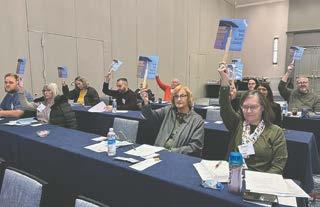
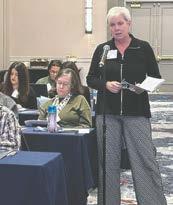
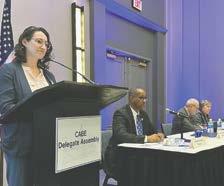
Social Media
Berlin Public Schools
C.E.S.
Fairfield Public Schools
Greenwich Public Schools
Lebanon Public Schools
Norwalk Public Schools
Norwich Free Academy
Plainville Community Schools
Suffield Public Schools
Newsletter
Berlin Public Schools
East Hartford Public Schools
Glastonbury Public Schools
Greenwich Public Schools
Lebanon Public Schools
Plainville Community Schools
Region 18 Public Schools
Vernon Public Schools
Wilton Public Schools
Windsor Public Schools
Annual Report
Branford Public Schools
C.E.S.
Norwalk Public Schools
Website
Fairfield Public Schools
Lebanon Public Schools
Norwalk Public Schools
Plainville Community Schools
Wilton Public Schools
Wolcott Public Schools
District Budget
Canton Public Schools
Danbury Public Schools
Glastonbury Public Schools
Lebanon Public Schools
Norwalk Public Schools
Region 18 Public Schools
Stafford Public Schools
Wolcott Public Schools
Parent/Student Handbook
Derby Public Schools
Stafford Public Schools
Wolcott Public Schools
Course Selection Guide
Norwalk Public Schools
Plainville Community Schools
Westbrook Public Schools
Wolcott Public Schools
Patrice McCarthy
Executive Director & General Counsel, CABE
Dr. Joseph Cirasuolo, a former Executive Director of the Connecticut Association of Public Schools Superintendents (CAPSS), died recently. Joe previously served as superintendent in Wallingford and Clinton and as the Chief Operating Officer of the American Association of School Administrators (AASA). He was a committed leader in public education throughout his career. We will miss our friend and colleague. David Kennedy, a former
member of the Stratford Board of Education and CABE Board of Directors, died recently. David had been working with CABE in the past year as a board chair mentor. David made many contributions in his personal and professional life to the non-profit community, including serving as President and CEO of United Way of Norwalk. CABE extends our condolences to David’s family, including his son Sean, a current member of the Stratford Board of Education.
Calendar
C.E.S.
Glastonbury Public Schools
Honorable Mentions
Branford Public Schools
C.E.S. Canton Public Schools
Cheshire Public Schools
Derby Public Schools
East Hartford Public Schools
Fairfield Public Schools
Granby Public Schools Madison Public Schools
Meriden Public Schools
Schools Glastonbury Public Schools
Norwalk Public Schools
Norwich Free Academy
Computer Generated Project
Glastonbury Public Schools
Norwalk Public Schools
Wilton Public Schools
Norwich Free Academy
Saybrook Public Schools Plainville Community Schools Region 18 Public Schools Ridgefield Public Schools Stafford Public Schools Westbrook Public Schools
Wilton Public Schools
Pathways to Grow a Diverse Educator Workforce
December 9, 2024
Working Effectively with People Who Have Different Perspectives
December 11, 2024
Legislative Issues and Advocacy December 17,
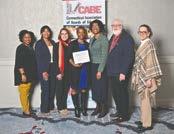
Bloomfield’s Board of Education exemplifies effective leadership through data-driven decision-making, a focus on professional development, proactive student support, fiscal responsibility, community engagement, safety management, and a commitment to equity. These practices not only enhance the educational experience for students but also build a strong, supportive community around the schools. These frameworks have improved our governance and effectiveness.
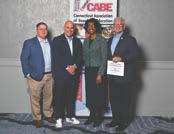
Canton’s Board of Education leadership is especially effective and mainly contributed to the fact that the Canton Board of Education maintains open and transparent communication with the Superintendent of Schools and stakeholders including parents, teachers, staff, and the community. This communication fosters trust and collaboration by building strong relationships with community organizations which promotes a unified approach to education. In addition to the monthly Board of Education meetings, monthly Leadership meetings are held with the Board Chair, Superintendent Chief Administrative Officer, First Selectman, and the Board of Finance, fostering town-wide communication. We look forward to continuing our leadership role for years to come as we continue to navigate complexities in the ever-changing world of education, all while celebrating student successes and achievements.
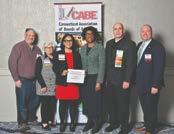
Members of the Cheshire Board of Education demonstrate leadership through an unwavering commitment to collaboration in the name of our students, staff, and community. Each member is a member of the Board of Education before they are a member of a political party, and this is reflected in their practice. Committees and our full Board recognize the value of open communication between one another, the administration, and the community to provide clear guidance. This common allegiance has fostered a unique unity to the point that a collegial bond has developed. The Cheshire Board of Education is proud to submit this application in recognition of the commitment it has made to student success through collegial collaboration.

Board members’ dedication to their volunteer positions makes their leadership effective. The Board of Education actively participates in CABE through activities including the CABE/CAPSS Conference, the Summer Leadership Conference, Day-on-the-Hill, and webinars. They seek out other opportunities for professional development and place a value on the annual Board Retreat where members have time to evaluate their performance as board members. The goal of the retreat is to make sure the work of the board is relevant and effective. To further their work, board members encourage public input and are active and accessible in the community. Board members meet with School PTOs, PTO Leadership, interest groups, student groups, and more.
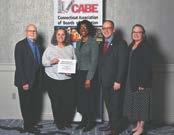
a collective emotional intelligence, collaboration, adaptability, creative problem-solving, strategic thinking, learning opportunities, resilience, inclusivity, communication, sustainability, and digital literacy. The Plainville Board of Education truly personifies characteristics, traits, and practices that define “effective leadership” and move them from surviving as school district leaders to THRIVING in their individual and collective roles! Our Board “walks the walk” of effective leadership day in and day out, in all aspects of their contributions to the Plainville school system.

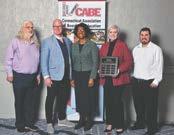
The Board demonstrates leadership by fostering a collaborative environment that encourages input from all stakeholders. Through the development of the District’s Strategic Plan as well as Board policies, frameworks are in place that prioritize equity, instructional innovation, and student success. The Board builds strong community relations, engaging parents and stakeholders to create a unified support system for students. Their outreach efforts foster trust and collaboration,
ensuring that the community plays an integral role in the educational process. The Board supports and appreciates the work of both certified and non-certified staff and ensures that the necessary resources and support are available for them to be successful in their work with students. Their commitment to providing training and resources empowers all educators and support staff and promotes a culture of lifelong learning and professional growth. The Board’s strong, cohesive partnership with the superintendent is a great example of their success. This collaborative relationship promotes transparency and aligned goals, ensuring that district initiatives are effectively implemented and supported.
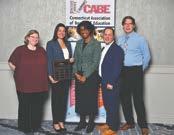
The Region 15 Board of Education works in partnership with the Superintendent, district administration, and staff to lead the district in the education of our students. One of the things the Board of Education does to foster this partnered leadership is to start each of our meetings with a reading of our Mission Statement. Reading this statement grounds our meetings and provides a clear reminder of our focus and priorities. We also work with the administration annually to set goals for the Board of Education and support coherence throughout the district. We strive to support those goals through our meeting presentations and demonstrate our priorities through our budget process. We are eager to see data that informs us about our improvement efforts, and we actively support professional development that will lead to student growth and increased achievement over time.
If you missed the Convention Friday Morning General Session, including Tim Shriver’s presentation, you can watch it by scanning the QR code below:
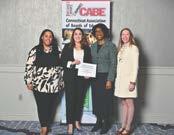
The Stafford Board of Education exemplifies effective leadership through a strong commitment to collaboration and transparent communication with stakeholders. We actively seek feedback from school staff and the broader community, recognizing them as vital partners in the success of our schools. The Board Chair and Superintendent provide weekly updates, ensuring that the Board remains well-informed on key issues. We value every voice and foster dialogue, even when opinions differ. To support new members, we have created a comprehensive information packet to help their transition. Last year, the Board successfully passed the budget on the first referendum, a significant achievement for our town. This demonstrates our ongoing dedication to listening to stakeholders and prioritizing what is best for our students.
BERLIN Information Unavailable

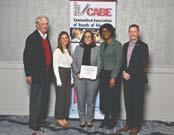
Aligned with the Strategic Plan, the Bethel Board of Education adopted a set of goals that enables the school district to focus on what is most important – improving student outcomes. The Board’s goals keep student growth as the foremost priority and connect the work of the schools with the vision we hold for our students.

The Branford Board of Education plays an important role in effective leadership for improving student achievement. The key strategies the Board has engaged in recently include:
1. Relying on the adopted Strategic Coherence Plan and annual report to draw a clear through line between stated goals and evidence of progress.
2. Hiring, supervising, and evaluating a Superintendent.
3. Allocating resources that are designed to enhance student achievement including investment in teaching talent, new reading curriculum, and ample technology resources.
4. Monitoring the district’s progress through updates and presentations to the Board’s Teaching and Learning Committee as well as the full Board.
5. Attending to the needs of teaching and learning through regular policy updates that may potentially impact teaching and learning.
6. Supporting the professional development of all staff by adopting a school calendar that allows for regular early release days for adult learning purposes.
7. Allocating resources for teacher job-embedded and external professional learning as needed.
8. Attending to their professional learning needs allowing them to provide appropriate oversight of teaching and learning and leadership accountability through CABE and other resources.

During my career, I have been fortunate to work with many quality Boards of Education. Coventry’s current
group of Board members, some of whom I have worked with over the past thirteen years, have never wavered in their commitment to doing what is best for students. This commitment, and their strong leadership, have resulted in the acquisition of resources which has allowed the district to prepare students for the challenges of the 21st century. Most recently, our Portrait of the Graduate initiative has us building on the success we have experienced over the past several years. Additionally, our intermediate school obtained National Blue-Ribbon School status. This work will position our students to achieve individual goals that ensure they are ready for future college and career opportunities. Last, although each member has their political affiliation, they demonstrate a willingness to work together with student achievement at the very forefront. Their combined efforts and growth as a team on behalf of the students of Coventry, validate the confidence the community had in electing these individuals to office.
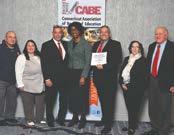
Our board leadership consumes all their available time with learning more about the state’s new initiatives and participates actively to ensure all board members are provided with professional development on these initiatives. In addition, we have scheduled meetings throughout the year that are dedicated to reporting on and learning more about student achievement, learning, and improvement. The most recent has been their leadership supporting the development of a new strategic plan. Support for our continued growth is a testimony to the commitment the board has to improve student learning. Without this leadership and a willingness by all members to lead a part of the journey, we would not be able to create the experiences we do for our kids and staff.
The East Hartford Board of Education (EHBOE) Team continues to make a collaborative effort and commitment
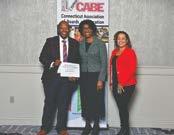
to build upon relationships between Board members, the Superintendent, and the Leadership Team that prioritize student needs and are grounded in “role clarity.” Our Board continues to stand as an example of elected officials who share a common vision and deeply believe in the power of collaboration. While members bring strong opinions, thoughts, and ideas to the board table, they collectively support the Superintendent and his administration. The result is a strong and positive relationship between the Board and district leadership that is compelling and pervasive at all levels.
EAST LYME Information Unavailable

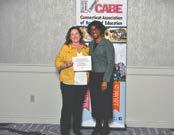
Last year, our Board established a new five-year strategic plan. We are proud of how the plan’s three goals mobilize the Board’s efforts to improve student achievement:
Goal 1 - Promote active learning and high expectations for all students.
Goal 2 – Provide safe, supportive, and inclusive learning environments.
Goal 3 – Prioritize the health and well-being of students and staff. By connecting our decisions and actions directly to these goals, we remain successful in preparing students for the careers and colleges that await them. We directly influence the success of these goals through board policy, resource allocation, and curricular review.
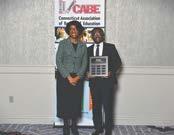
As the world changes at a rapid pace, many of today’s elementary school students will enter careers that do not yet exist. Recognizing this shift, we understand that it is no longer sufficient for students to simply meet academic standards. These skills alone will not distinguish them in the modern workforce.
It is our responsibility to support our students in developing 21st-century skills that are most in demand by employers and are crucial for ensuring that NPS students, regardless of their chosen paths after high school, are positioned for success. The NPS BOE staunchly supports providing all students with these critical skills.
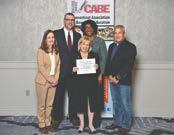
The Old Saybrook Board of Education is particularly effective in enhancing student achievement due to the district’s clear vision, strategic planning, inclusive decision-making, and commitment to educating the whole child. The vision, “Learners in Old Saybrook excel in and outside the classroom, engage fully in the schools and the larger community, and achieve their highest aspirations,” serves as the cornerstone of the Board’s efforts.
The Board’s vision emphasizes holistic student development, ensuring that learners excel academically and personally. This vision is supported by a comprehensive strategic plan that outlines specific goals and initiatives to foster student success.
The Suffield Board of Education has played a crucial role in focusing on student achievement in our district. First, the Board recognizes that its role is separate but complementary to the work done by our professional administrators. Together, we work as a team

to set high expectations for students and staff, craft policies that create an environment conducive to academic success, and advocate for suitable funding for the district.
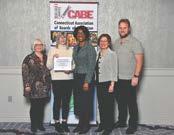
The leadership of the Thomaston Board of Education is especially effective in improving student achievement through the focused efforts of the Ad Hoc Student Achievement Committee. The Student Achievement Committee of the Board meets to set student performance goals and to review student achievement progress. What makes the Board’s leadership especially effective in this area is that it actively collaborates with and takes advice from the Superintendent, the Director of Curriculum, and other committee members like the Mathematics Instructional Coach. Without collaborating with the staff who are “in the trenches,” the Board’s efforts to improve student achievement would be passive and in policy only. Our Board’s leadership is active, effective, and focused on student achievement.
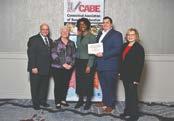
The Vernon Board of Education has adopted a Five-Year (2022–2027) District Strategic Plan. This Strategic Plan is a full-year roadmap to drive school improvement efforts in Vernon. The Strategic Plan affirms our vision, mission, and core beliefs while creating a pathway toward the next level of educational excellence for all students. The Strategic Plan is built upon successful
district initiatives like the Blueprint for Success, Vision of the Graduate, and District Equity Stance, which have guided improvement efforts to date. The three (3) Priority Areas are Student Success, Family and Community Engagement, and System Excellence. In addition, every Board Meeting has a “Teaching and Learning” agenda item and a student presentation to ground the members in their work.
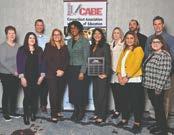
The Westbrook Board of Education created a new committee in 2021 to improve its leadership in improving student achievement and to increase their understanding of instructional needs and priorities in teaching and
learning The Westbrook BOE Teaching and Learning Committee meets quarterly with the Superintendent to review and discuss curriculum and professional development priorities, including planning for future work to improve student achievement in reading, math, and science. The Westbrook BOE reviews student achievement data annually with the Superintendent and aligns shared goals to improve student achievement. This has leveraged their work together to increase student achievement and yielded significant improvements.
Photo and content unavailable.
WINDSOR Information Unavailable
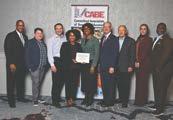
The CABE/CAPSS Convention Committee would like to thank the following for their generous sponsorship of the 2024 Convention:
DIAMOND SPONSORS
SILVER
BRONZE SPONSORS EASTCONN
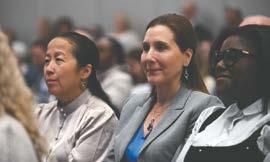
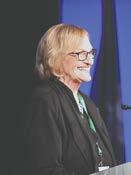
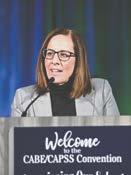
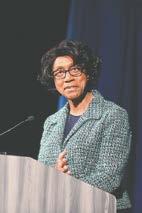
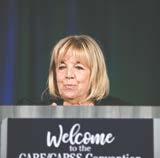

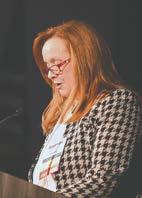

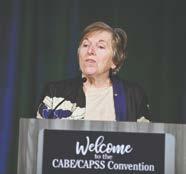
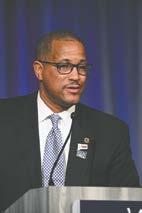

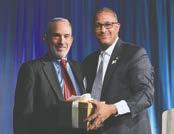
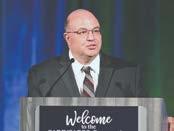
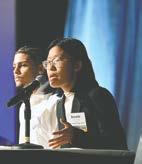




Mark J. Sommaruga, Esq. Pullman & Comley, LLC
Connecticut’s Freedom of Information Act (“FOIA”) generally provides access to records created by public agencies (including school districts). However, the FOIA contains an exemption from disclosure for “educational records” that are covered by the federal Family Educational Rights and Privacy Act (“FERPA”). Generally, FERPA prohibits school districts from disclosing educational records (or personally identifiable information concerning students contained in those records) without parental consent. A recent decision by Connecticut’s Freedom of Information Commission (“FOIC”) provides further guidance for school administrators seeking to navigate between the right to privacy and the “right to know.”
While FERPA generally prohibits school districts from disclosing educational records or personally identifiable information contained in those records without parental consent, FERPA grants parents the right to inspect and review their own child’s education records. These FOIA and FERPA requirements sometimes collide when the records of one student (for example, videotapes) contain personally identifiable information and/or educational records concerning another student.
FERPA
In light of FERPA and previous formal guidance from the U.S. Department of Education; Letter re: Berkeley County School District (Family Policy Compliance Office, February 10, 2004); the FOIC had repeatedly upheld decisions by school districts not to release videos (for example, security videos) containing student images, especially where 1) the requested videos would reveal a student image to someone other than that student’s parent, and 2) the videos could not be edited (for example, via pixelating) to obscure or delete the images of the other students in the videos.
We had thought that the times could be a changing when the U.S. Department of Education issued a guidance letter in
2017 that hinted that parents of a student may have the right under FERPA to inspect and review information in videos even if a video also includes images of other students. Letter to Wachter (Office of the Chief Privacy Officer, December 7, 2017). This guidance letter dealt with records (including videos) maintained and used in student disciplinary matters; the U.S. Department of Education found that videos would constitute “educational records” for both the student “victims” and student “perpetrators” depicted in the video. Under this letter, the “right” to inspect would apply even in circumstances where it is not possible to edit or obscure the images of the other students. This 2017 guidance letter did not suggest that a school district was required to provide copies of videos to parents, but merely indicated that parents had a right to view or “inspect” them. Furthermore, this guidance letter only spoke to the right of access of the parents of students who appear in the video. It did not create a blanket obligation to provide access to the general public or to parents of other students who are not depicted in a particular school video.
So Has the FOIC Changed Its Views on the Issue of School Videos?
Nope. It appears that the FOIC is continuing to follow its prior rulings that expressly recognized that school districts may be prohibited from providing (and may refuse to provide) access to records to the parents of a student that contain information about other students unless they can be redacted to remove the ability to identify the other students. In Vasquez v. Superintendent of Schools, Hartford Public Schools, #FIC 2023-0489 (July 24, 2024), a parent concerned about a late drop-off of their child (and an alleged subsequent lack of security/monitoring, with the child allegedly wandering off) requested to view surveillance video inside the school recording students being signed in with the security guard and then entering the school through the late-drop off door. The school district refused to provide access to the video, asserting that the record was exempt from disclosure under FERPA.
Continuing to rely upon the 2004 U.S Department of Education guidance
(and perhaps rejecting or ignoring the 2017 guidance letter), the FOIC found that FERPA does NOT give a right to parents to review records which include information about (or depict) students other than their child. The FOIC noted that the requested surveillance video showed numerous students (in addition to the child of the parent making the request to inspect the video), and further found that the school district was unable to edit the video or delete the images of other students. As the disclosure of the requested video would result in the disclosure of educational records of other students within the meaning of FERPA, this video was deemed exempt from disclosure under the FOIA.
Interestingly, the FOIC noted in
Vasquez that although the video was exempt from disclosure, the school district had been able to capture still images and print out several redacted photos from the video (and provided them to the parent requesting the video). Such photos included a photo of the requestor’s son being retrieved by school staff from a room into which he wandered. The school district’s actions represent a compromise that yours truly often proposes when facing similar requests as in Vasquez. The FOIC appears to believe that such a compromise is a way to honor both FERPA and FOIA.
Attorney Sommaruga is the author of “Understanding Connecticut’s Freedom of Information Act” (6th Edition 2024), which has just been released and is available through CABE.

